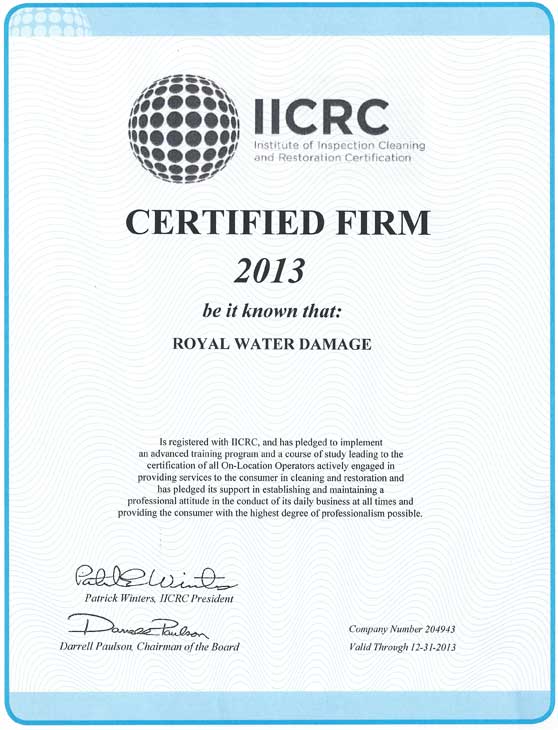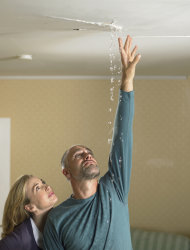Subrogation refers to the process an insurance company uses to seek reimbursement from the responsible party for a claim it has already paid.
Subrogation matters to you if:
- You have a covered loss, and
- You submit a claim to your insurance company, but
- Another party is actually responsible for all or part of the damages (i.e. you have a car accident and the other driver caused the accident, or if damage to your home was caused by a faulty appliance)
In this case, your insurance company may pay your claim, and then seek reimbursement from the other party. This would depend on the circumstances surrounding the loss, the laws in your state, and your policy provisions.
If your company decides to pursue subrogation, the company will work to recover the damages from the responsible party. Damages may involve costs paid by you and the insurance company. Costs paid by you usually means your deductible, but could include amounts over your policy limits not paid by your insurance company. This would depend on the laws in your state and the specific circumstances surrounding the loss.
The subrogation process may also be used if you are at fault for damages. In this case, the other party and/or their insurance company would make a claim against you, usually directly to your insurance company. Your company will review the facts of investigation to determine if you are liable for the damages. Your company may make payment to the other company if you have coverage and it is determined that you would be legally responsible for all or part of the damages. Keep in mind that often times liability is not clear cut. In some cases, both parties may be partially responsible. Dependent on the laws in your state, both parties may share responsibility for payment of damages. For example, one party may be 40% responsible, and the other party may be 60% responsible. This could mean that both companies make subrogation claims against each other, and each company pays their respective portion of the other party’s claim.
In all cases, your participation and cooperation with us in the investigation phase of the claim process is important. Your assistance can help to establish important facts, and preserve evidence, and may help to accelerate the recovery process.
Reimbursement When Money is Recovered
If money is recovered, and part of the recovered amount was paid by you, (you paid your deductible, for example, but it was the other party’s fault) a reimbursement check will be issued. The reimbursement check is usually issued when money is received. Please note that practices vary based on the specific laws for your state.
The amount to be reimbursed is based on the amount claimed and the amount recovered. The amount claimed through subrogation depends on the amount each party was at fault. The amount recovered usually is divided proportionally between the insurance company and the insured, after expenses. This could vary based on the laws in your state.
How Reimbursement Amounts are Calculated
Dependent on the laws in your state, you may be fully reimbursed for your deductible if:
- The other party was 100% at fault
- The other party paid the damages claimed in full
- There were no collection expenses (i.e. collection agency) to recover the money.
Often times though, it is not that simple. Based on the different factors that come into play, the calculation of the reimbursement amount can become quite complicated. The reimbursement of your deductible depends on several factors, including the amount recovered, the amount claimed (based on the amount the various parties were at fault), and state laws.
Generally, you would receive reimbursement of your deductible equal to your proportion of the total amount claimed to the total amount recovered, net of expenses. However, precisely how the reimbursement amount is determined varies by state.
These examples outline general rules that apply in many states—please discuss the specifics of your case with your subrogation claim representative.
Example 1: Other party is 100% liable, but only paid part of the amount
The total amount of damages paid is $10,000. The other party was 100% responsible for the damages. Subrogation claim is for $10,000.
- You paid $1,000 and your insurance company paid $9,000.
- Your proportion is 1/10 or 10% of the total amount claimed—$1,000.
- The amount actually collected is $5,000. There were no collection expenses.
- You are reimbursed for $500, or 10% of the amount collected.
- Your insurance company is reimbursed for $4,500.
Example 2: Other party is partially liable; only paid part of the amount
The total amount of damages paid is $1000. The other party was 60% responsible for the damages. Subrogation claim is for $6,000.
- You paid $1,000 and your insurance company paid $9,000.
- Your proportion is 1/10 or 10% of the total amount claimed—$600.
- The amount actually collected is $3,000. There were no collection expenses.
- You are reimbursed for $300, or 10% of the amount collected.
- Your insurance company is reimbursed for $2,700.
Questions? Your Claims Representative Can Help.
Subrogation can be complex and non-intuitive. If you have questions, please let your claims representative know.




